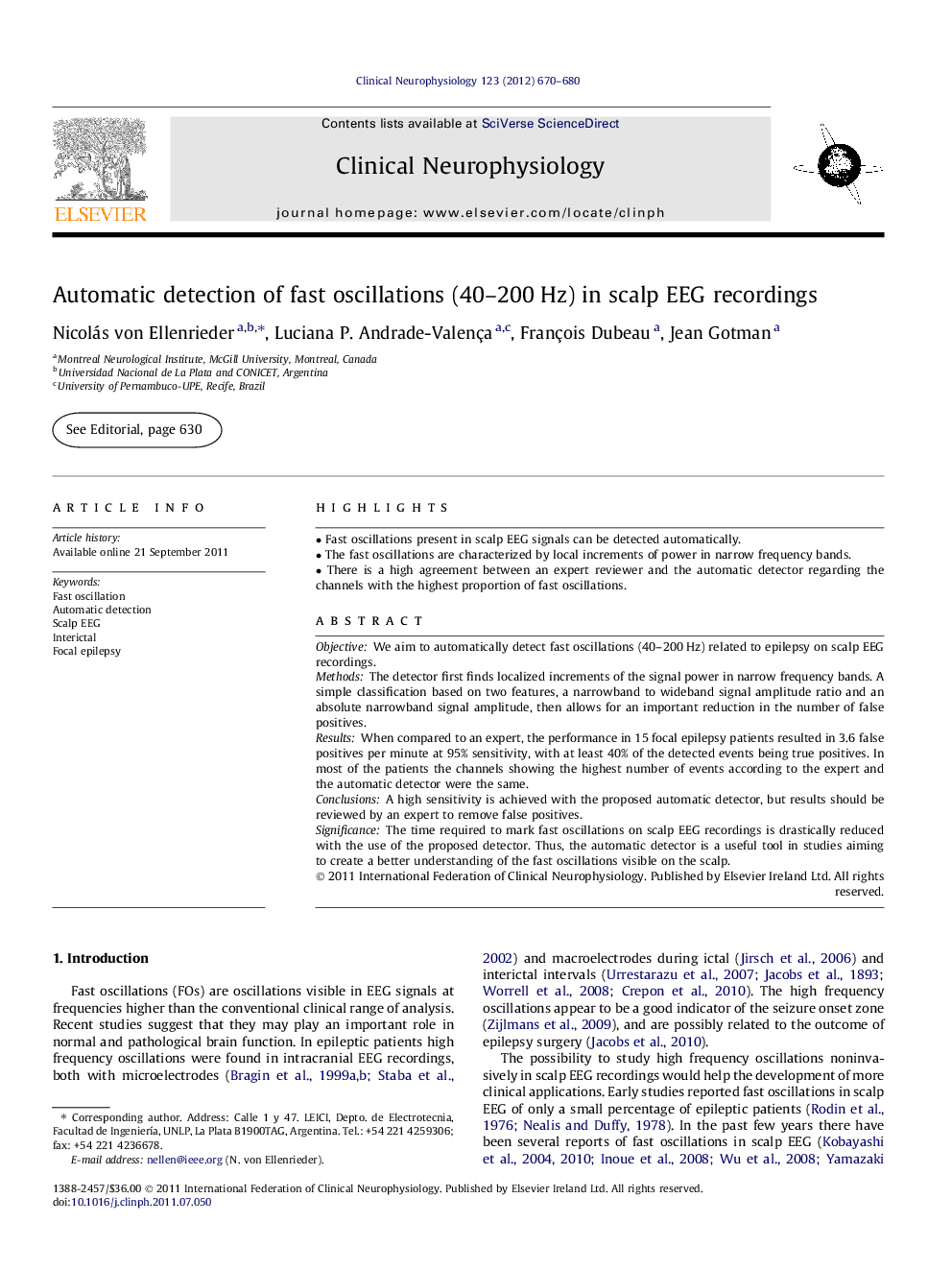| Article ID | Journal | Published Year | Pages | File Type |
|---|---|---|---|---|
| 3043598 | Clinical Neurophysiology | 2012 | 11 Pages |
ObjectiveWe aim to automatically detect fast oscillations (40–200 Hz) related to epilepsy on scalp EEG recordings.MethodsThe detector first finds localized increments of the signal power in narrow frequency bands. A simple classification based on two features, a narrowband to wideband signal amplitude ratio and an absolute narrowband signal amplitude, then allows for an important reduction in the number of false positives.ResultsWhen compared to an expert, the performance in 15 focal epilepsy patients resulted in 3.6 false positives per minute at 95% sensitivity, with at least 40% of the detected events being true positives. In most of the patients the channels showing the highest number of events according to the expert and the automatic detector were the same.ConclusionsA high sensitivity is achieved with the proposed automatic detector, but results should be reviewed by an expert to remove false positives.SignificanceThe time required to mark fast oscillations on scalp EEG recordings is drastically reduced with the use of the proposed detector. Thus, the automatic detector is a useful tool in studies aiming to create a better understanding of the fast oscillations visible on the scalp.
► Fast oscillations present in scalp EEG signals can be detected automatically. ► The fast oscillations are characterized by local increments of power in narrow frequency bands. ► There is a high agreement between an expert reviewer and the automatic detector regarding the channels with the highest proportion of fast oscillations.
